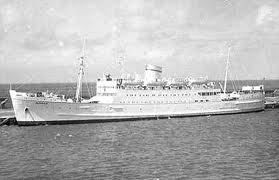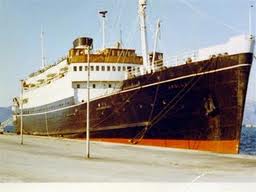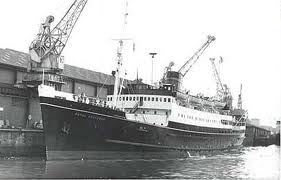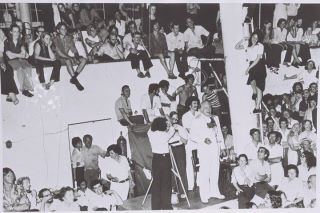Difference between revisions of "Apollo"
(→The Final Days on the Apollo) |
(→The Final Days on the Apollo) |
||
| Line 26: | Line 26: | ||
The crew departed in December of 1975 leaving seven of us behind. Dave Murphy was the Captain of the ship keeping crew as we were known. The remaining members were Jonah Harris, Gary Press, Jim Neal, Ron Morris and myself. There was another crew member who blew from Nassau while on liberty. I don't recall his name. All in this group were [https://en.wikipedia.org/wiki/Engineering_officer_(ship) '''engineers'''] except for me. I was working on deck during the transition to the land base. I volunteered for the assignment. As the crew left I was told that the duration would be about three months, but I didn't believe that. I assumed that we would be there for at least six months. With everything going on, I expected at least six months. As it turns out, it was almost two years before we departed the Bahamas. At the time the crew left very few people that they were going to Daytona, and we did not learn about [https://en.wikipedia.org/wiki/Clearwater,_Florida '''Clearwater'''] for a very long time. | The crew departed in December of 1975 leaving seven of us behind. Dave Murphy was the Captain of the ship keeping crew as we were known. The remaining members were Jonah Harris, Gary Press, Jim Neal, Ron Morris and myself. There was another crew member who blew from Nassau while on liberty. I don't recall his name. All in this group were [https://en.wikipedia.org/wiki/Engineering_officer_(ship) '''engineers'''] except for me. I was working on deck during the transition to the land base. I volunteered for the assignment. As the crew left I was told that the duration would be about three months, but I didn't believe that. I assumed that we would be there for at least six months. With everything going on, I expected at least six months. As it turns out, it was almost two years before we departed the Bahamas. At the time the crew left very few people that they were going to Daytona, and we did not learn about [https://en.wikipedia.org/wiki/Clearwater,_Florida '''Clearwater'''] for a very long time. | ||
| + | |||
| + | With the crew gone, it took a while for us to settle into a routine. Murphy needed to get com-lines established and funding for our activity. We needed to secure things on the ship so that they would need little attention. For transport we initially used the #3 lifeboat for transport because it had a diesel motor. It was a bit dangerous for everyday use however, because when you lowered it you had to crank over the engine by hand to get it started. At the same time someone had to unhook the heavy [https://en.wikipedia.org/wiki/Block_and_tackle '''fall blocks'''] while the boat was rising and falling on the waves. You had to push off from the [https://en.wikipedia.org/wiki/Hull_(watercraft) '''hull'''] and steer it away from the [https://en.wikipedia.org/wiki/Strake '''rubbing strake'''] so you wouldn't get crushed. This is not something we wanted to do forever, so we eventually built a [https://en.wikipedia.org/wiki/Skiff '''skiff'''] out of plywood and fiberglass and got a [https://en.wikipedia.org/wiki/Yamaha_Motor_Company '''Yamaha'''] [https://en.wikipedia.org/wiki/Outboard_motor '''outboard engine'''] for everyday use. It had only a few inches of [https://en.wikipedia.org/wiki/Freeboard_(nautical) '''freeboard'''] but could plane and was a much better and safer method. | ||
== <center>Picture Gallery</center> == | == <center>Picture Gallery</center> == | ||
Revision as of 14:12, June 4, 2017
| T.S.M.Y Apollo | |
|---|---|
| Length | 340' |
| Beam | 48' |
| Displacement | |
| Draft | 17' |
| Top Speed | 18 knots |
The Apollo was the main vessel of the Sea OrgAbbreviation for Sea Organization. (Modern Management Technology Defined (C) 1976).![]() . It was bought in October of 1967 and sold in 1975.
. It was bought in October of 1967 and sold in 1975.
For a history of it's wartime service click here.
The Final Days on the Apollo
By Paul Kawaller
The majority of the contents of the Apollo were removed in Curacao and shipped north to Daytona. We sailed to New Providence Island (Nassau) in the Bahamas and in October of 1975 made final preparations to mothball the ship and remove the remainder of the crew and all Scientology materials. The ship was anchored in South West Bay in about 60 feet of water. As the ship swung on the anchor chain the aft section was not far from the Tongue of the Ocean, which dropped off to 3600 ft.
The crew departed in December of 1975 leaving seven of us behind. Dave Murphy was the Captain of the ship keeping crew as we were known. The remaining members were Jonah Harris, Gary Press, Jim Neal, Ron Morris and myself. There was another crew member who blew-v. ''Slang'' unauthorized departure from an area. (HCOB 19 Jun 71 II)![]() from Nassau while on liberty. I don't recall his name. All in this group were engineers except for me. I was working on deck during the transition to the land base. I volunteered for the assignment. As the crew left I was told that the duration would be about three months, but I didn't believe that. I assumed that we would be there for at least six months. With everything going on, I expected at least six months. As it turns out, it was almost two years before we departed the Bahamas. At the time the crew left very few people that they were going to Daytona, and we did not learn about Clearwater for a very long time.
from Nassau while on liberty. I don't recall his name. All in this group were engineers except for me. I was working on deck during the transition to the land base. I volunteered for the assignment. As the crew left I was told that the duration would be about three months, but I didn't believe that. I assumed that we would be there for at least six months. With everything going on, I expected at least six months. As it turns out, it was almost two years before we departed the Bahamas. At the time the crew left very few people that they were going to Daytona, and we did not learn about Clearwater for a very long time.
With the crew gone, it took a while for us to settle into a routine. Murphy needed to get com-lines established and funding for our activity. We needed to secure things on the ship so that they would need little attention. For transport we initially used the #3 lifeboat for transport because it had a diesel motor. It was a bit dangerous for everyday use however, because when you lowered it you had to crank over the engine by hand to get it started. At the same time someone had to unhook the heavy fall blocks while the boat was rising and falling on the waves. You had to push off from the hull and steer it away from the rubbing strake so you wouldn't get crushed. This is not something we wanted to do forever, so we eventually built a skiff out of plywood and fiberglass and got a Yamaha outboard engine for everyday use. It had only a few inches of freeboard but could plane and was a much better and safer method.
Picture Gallery
File Usage
This page links to the following file;



